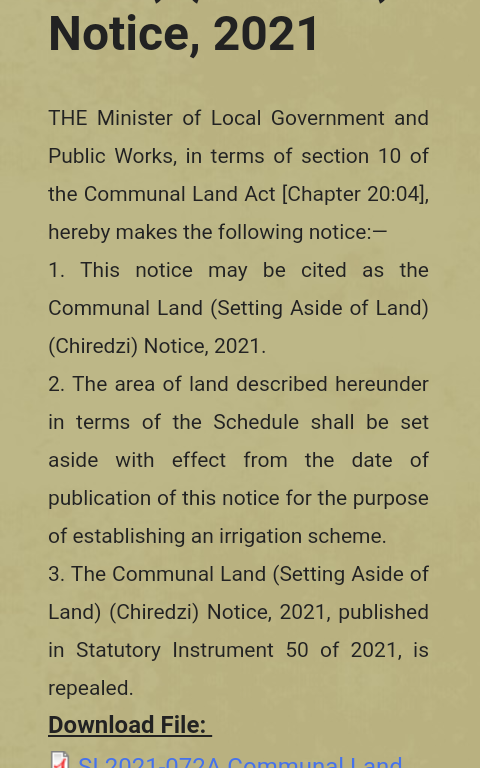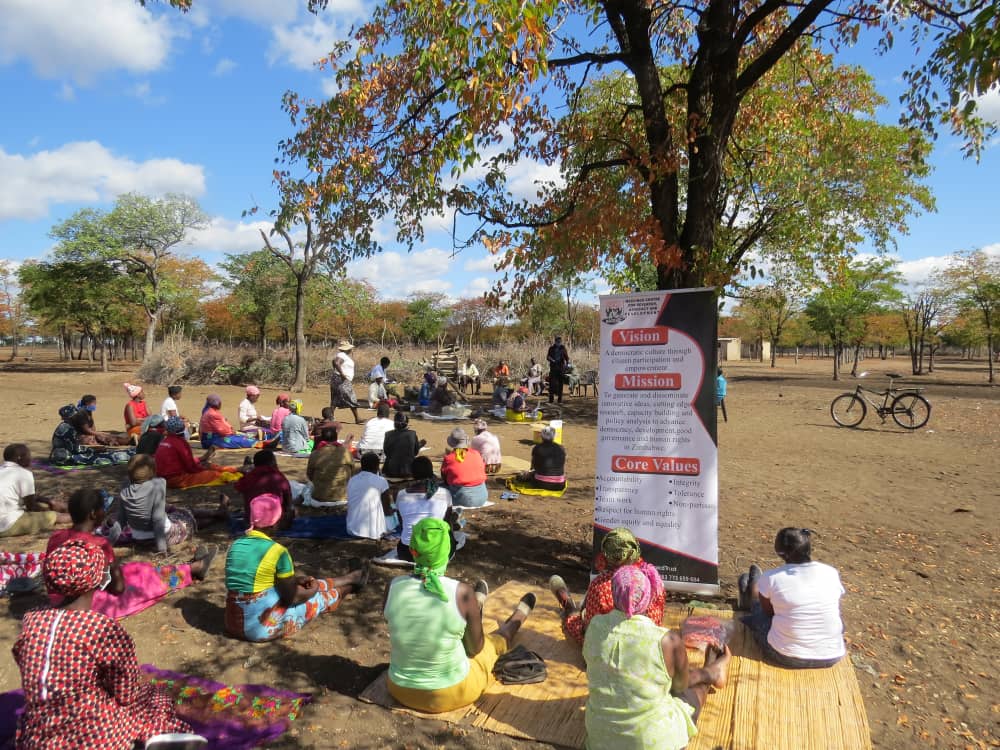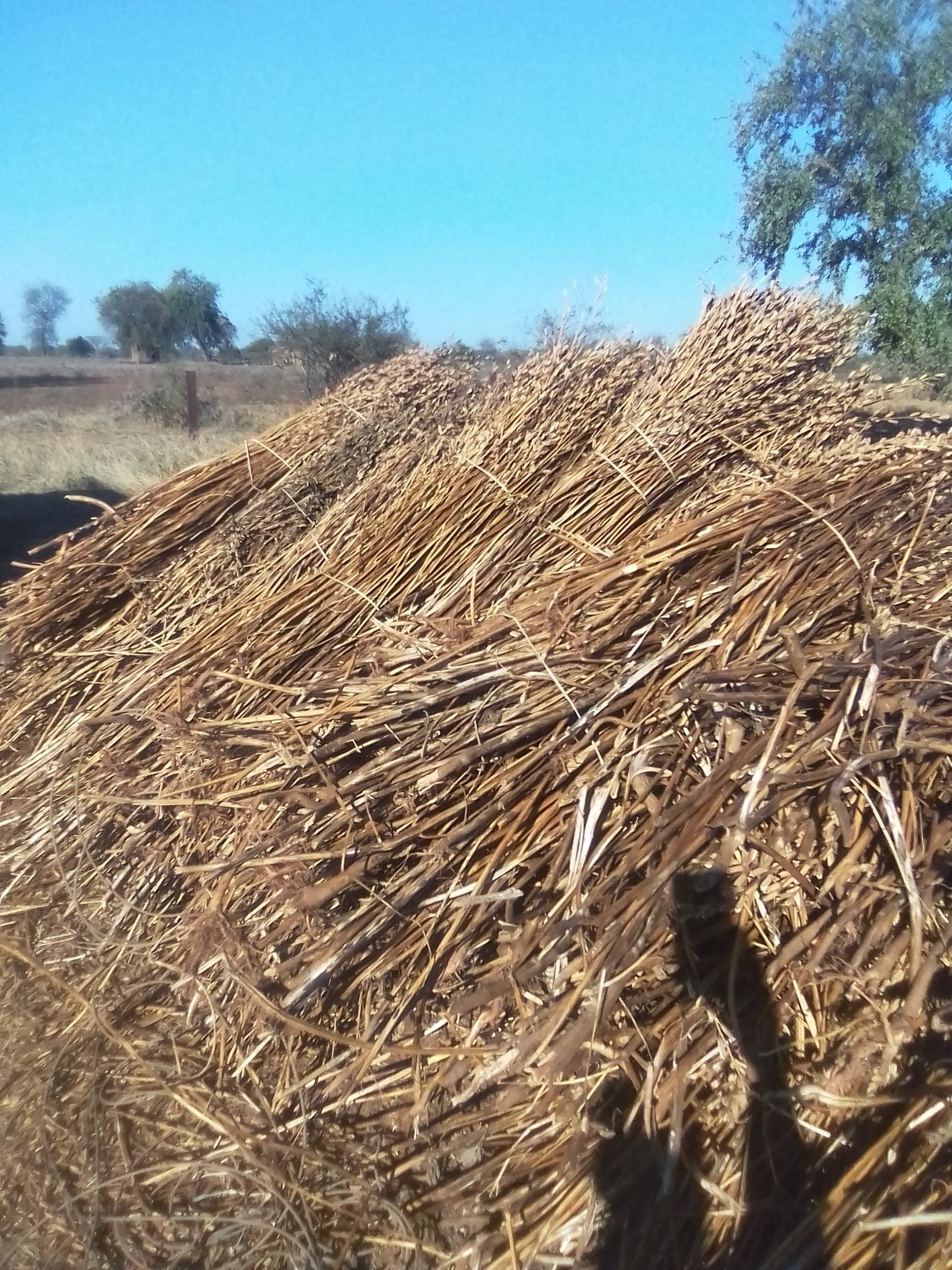The minority Shangani people in Chilonga South East Lowveld came out victorious from yesterday’s High Court sitting where government backtracked on the controversial land seizure to establish a Lucerne(Alfalfa) grass project.The Government of Zimbabwe, in its opposing Affidavit filed at the High Court yesterday (Thursday) indicated that it had abandoned the Lucerne grass project for an irrigation scheme on the same land.
By staff reporter
Through the Ministry of Local Government, National Housing and Public Works, an irrigation scheme, in place of the grass project, has been gazetted through a new Statutory Instrument (SI 72A of 2021) that repeals the previous SI 50 and 51 of 2021.
The previous Statutory Instruments sought to evict Chilonga villagers and make way for a foreign owned dairy company, Dendairy to utilise 12 940 hectares of the Shangani people’s land.

Some clauses in the new Statutory Instrument indicate that people will not be evicted from their land, except for those who are located where centre pivots, dams and pipes will be erected. These will be allocated land to stay within the same area.
Government drafted the new Statutory Instrument on the eleventh hour of the High Court case that was heard yesterday (Thursday).
Counsel for Chilonga villagers were surprised to see the new SI filed in records without having a before Court glance, but were happy that their prayer was answered.The SI 72A of 2021 was gazetted on 16 March 2021, two days before the matter was heard in Court.

Shangani villagers took Government to the High Court for arbitrary land acquisition with no alternative land to settle.
The new development means Government will not force Chilonga villagers out of their land, but will introduce a beneficial and all inclusive 12 940 ha irrigation scheme on the same land that was meant for the grass project.
However the SI is silent on who will operate the irrigation scheme and what crops will be grown there.

The new Statutory Instrument (SI 72A of 2021) repeals the previous ones (SI 50 & 51 of 2021) after Chilonga villagers took the Government to Court this month.
Zimbabwe Environmental Law Agency (ZELA) and Masvingo Advocacy Centre for Research and Development (MACRAD) represented Chilonga villagers.
Ephraim Mtombeni, Director for MACRAD told this publication that he was relieved after noting that Government indicated through the Statutory Instrument that there will be no more evictions of villagers as previously gazetted in SI 50.

He however, shot a broadside on Government for drafting and smuggling the new SI at the eleventh hour of the Court sitting, saying if Government had done this before, there was going to be no side shows between Government and Chilonga villagers.
He also challenged Govermment to come clear and to communicate its motives to villagers properly and in time so as to avoid confusion.
“I am happy with the repealing of the Statutory Instrument but Government must clearly outline some of these projects so as to reduce mass confusion.”said Mtombeni.

Shadreck Vengesai of The Centre For Conflict Management and Transformation, an advocacy organization that has direct interest in evictions of Chilonga villagers and many other areas were unwarranted evictions of people take place, told this publication that the difference on the two Statutory Instruments is the same as long as people are forced to move from their places without any notice,compensation, dialogue and formal communication.
Vengesai said his organisation interfaced with the Minister of Local Govermment, National Housing and Public Works, July Moyo on the Chilonga saga and were promised that villagers will not be moved from their homes save for few who will make way for irrigation pipes and buildings.
Vengesai also said that alone is an infringement to human rights.
“Our position is that Government must communicate to people on its intentions to establish developmental projects. People must not be evicted without given alternative land to stay. Should Government decide to do developmental projects in an area where there are people already staying, the onus is on it to establish an alternative place for them to stay. That area must be the same in size, soil, water, roads and schools to the one people have been evicted.There must also be compensation in terms of buildings, gardens, livestock and even fruit trees” Vengesai said.
He also said his organisation is working on a position paper on how Government can minimize conflicts with people during the course of establishing developmental projects.The book is set to be launched next month.
Last year, Government poked the eyes of the minority Shangani people in Chilonga as it tried to force the Lucerne project down their throats.This caused resistance from villagers who took up the matter to Court.
Two statutory instruments [S.I 50 of 2021 and S.I 51 of 2021] were gazetted by the government on 26 February 2021 citing provisions of the communal Land Act [“the Act”] simultaneously coming into effect that same day and enabling Statutory authority to achieve the proposals.
Part of the SI 72 of 2021 declaration reads:
“.. 2. The area of land described hereunder in terms of the schedule shall be set aside with effect from the date of publication of this notice for the purpose of establishing an irrigation scheme.”
The above mentioned area is approximately 12 940 ha and is located in the Lowveld region of Zimbabwe with a close proximity to a number of dams such as Tugwi-Mukose, Bangala, Manjirenji and “Mtirikwi.”













